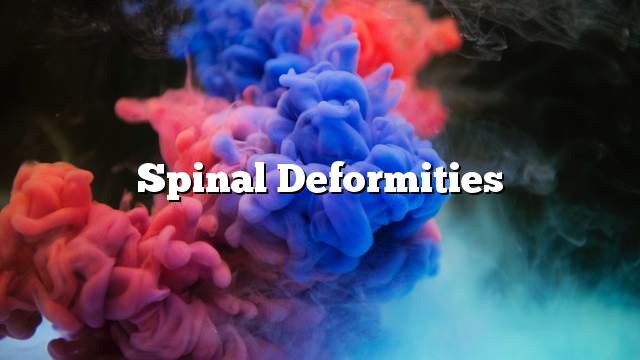The spine is the pillar of the body, and it is a fundamental pillar of its cohesion and strength and when it has health and hardness. The ability and hardness of the body, when weakened and debilitated, increased body weakness and collapsed.
The spine extends back and forth through the middle, starting from the bottom of the skull, ending with the top of the buttocks (bones of the pelvis), and if we hope to install it, we will find it very precise and creative. It is well equipped and soft. Which provides a strong support to build the body and meet the needs and performance of various movements. It provides protection for the spinal cord that passes through the spinal canal, which is the main communication line of nerves connecting the brain to all parts of the body.
The spine consists of a series of bones connected to each other called the vertebrae (24 paragraphs, seven cervical vertebrae, 12 vertebral vertebrae, five vertebral vertebrae, five conjunctive vertebrae, and a number of vertebral vertebrae at the end of the spine. Of the strong ligaments and muscles extended on both sides of the back and an average length of 70 cm.
The spine takes a straight shape if viewed from the back and a shape with four curves on the side. Articulated forward, posterior, arched, angular, curved and forward. These curvatures facilitate the movement of the trunk and reduce its susceptibility to injury.
Spinal deformities
- Scoliosis scoliosis is caused by:
Back muscle injury
Pelvic imbalance
Unknown reasons
- Closed back (Kivusis) is caused by:
Bad and defective physical conditions.
Weak back muscles.
- Curvature of the back (Lordosis) is caused by:
Injury to pelvic muscles.
Injury to the abdominal muscles.
Unbalanced walk.
- Acute flexion (spinal cord) results from:
Deformation in the paragraphs.
Pinsel injury.
Types of dorsal curvature
1 – Curvature of the spine is not fixed : In this case the paragraphs do not suffer any distortion of the problem here secondary caused by another problem such as:
Unbalanced paralysis of the back muscles.
Milan pelvis because of the shortness of one leg.
Poliomyelitis
Cerebral palsy.
muscle atrophy.
Spinal cord injury.
Hip dislocation.
arthritis.
Curvature in this case can be modified. For example, a child with polio who has a palace in one leg during the stand shows the pelvis to the side of the limb. This can be adjusted by placing a multi-footed foot at the bottom of the foot until the pelvis returns to the upright position.
Irregular curvature over time may become constant.
2 – Curvature of the fixed spine : In this case the paragraphs are distorted and can not be presented here and modify curvature and result from factors:
Hereditary.
Inflammatory.
And a throw.
Unknown reason.
Scoliosis
Eighty percent of cases of scoliosis are unknown, with the possibility of a genetic factor. One in 10 people has a curvature in the spine and one out of 400 people has a bronchus of the type that causes a problem. Curves often appear in ages 10- 16 years during the rapid growth period. Of some known causes:
Inflammation.
Oncology.
Some of the rare diseases.
Poor development of paragraphs during growth.
Some paragraphs may be partially full-grown or two or more paragraphs may be stuck unilaterally. During growth, the paragraph grows from the free side only as a result of that tendency in the spine.
1- Non-fixed curves: are addressed through their causes :
If the pelvic imbalance results from the shortness of one of the limbs as in the case of polio. We work to settle the pelvic pelvis by measuring the length of the limbs or through the spina bifida of the two vertebrae and correcting the curvature of the spine by placing a wooden thickness under the short bottom end.
- Medical devices and prostheses are not helpful in treating non-fixed curvature.
- Curves with a temperature below 20 ° C need to be monitored only.
2 – Fixed curves : If curvature less than 20 ° C needs to be monitored only, if more than 20 ° C is treated with:
- Cushions supporting and strengthening the spine (Milwaukee corset).
- Plastic corsets (Boston corset) that the patient can hide under his bosom.
- Surgery is necessary if the curvature increases from 50 ° C and is continuous in development and the age of the patient is more than 12 years.
If the angle of curvature is less than 40 ° C and the child has stopped growing, resort to the use of medical devices and therapeutic exercises. If the child stops growing and the angle of curvature is more than 50 ° C we have the possibility that the degree of curvature here would be preferable to surgery.
